The Rab Microlight Alpine Jacket is a lightweight packable jacket that uses recycled P.U.R.E. Down as insulating material. Read the review or watch the video!
- Weight: 406,3 grams (S)
- Packsize: 150 x 220 mm
- Price: € 229,95/ £ 195,00/ $ 280,00
For some reason I like down sleeping bags and down jackets more than the synthetic ones but I always choose my gear carefully and take sustainability into the equation. With down this is not always easy but with the Rab Microlight Alpine Jacket that uses recycled P.U.R.E. down as an isolating material, the choice is less complicated for me.
Size and weight
One of the big advantages of down is that it compresses very well and that is important because most of the time the down jacket just sits in my backpack waiting to be used. The Rab Microlight Alpine Jacket has a packsize of 150 x 220 mm and weighs on my precise scale 406,3 grams. The packsize is determined by the stuff bag that comes with the jacket. It is possible to compress it even a bit more for a smaller pack size. The jacket that I am reviewing is a size S by the way.
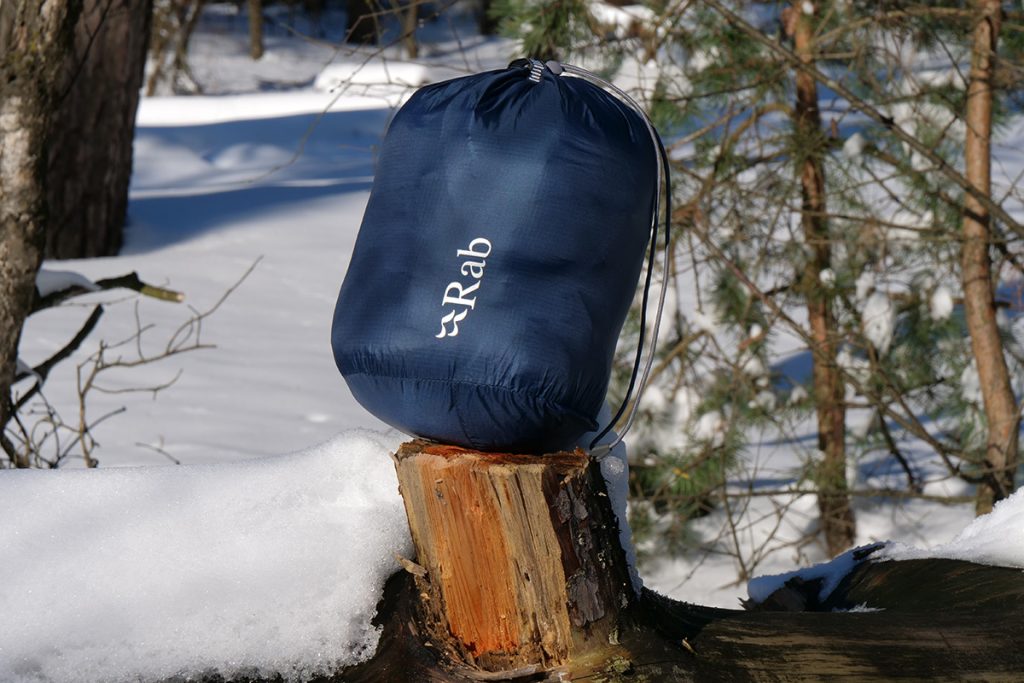
Taking the jacket out of the stuff bag is easy and in a few minutes the down expands to its full isolating volume. This is good since the shorter the time it takes, the faster the Rab Microlight Alpine Jacket can do its job: keeping me warm.
Recycled Materials
The main outer fabric of the Rab Microlight Alpine Jacket is made of 100% recycled 30D polyamide (nylon) Pertex Quantum with a weight of 50 g/m². On the outside of the Pertex fabric a DWR-coating is applied. More on this later. The liner of the Alpine Jacket is made of 100% recycled 20D polyamide (nylon) with a weight of 38 g/m². The D in 20D and 30D stands for Denier and is a measurement of expressing the thickness of the material.

P.U.R.E recycled down
Like I mentioned above the down that Rab uses in the Microlight is P.U.R.E Recycled down. P.U.R.E. down is down that is sourced from consumer waste like down duvets, pillows and other down products. These items are collected by companies that collect textiles for reuse. Where the product is no longer reusable as a whole, the valuable raw materials – in this case the down – are extracted, cleaned and sorted on quality. All this is done according to the guidelines of the Global Recycling Standard Guidelines.
When we are talking about down there are always two questions that are important: What kind of down? And what quality of down? Let me answer both shortly.
What kind of down? Is it from geese or ducks? This question is or was important when we all were convinced that the down plucked from geese has a higher quality than from ducks. Nowadays specialists all agree that geese and duck down look different but that they still can have the same level of isolation properties. Or in other words: that in the end the only thing that is important is the isolation value or fillpower. And that answer is in the next question.
What quality of down?
The down quality – something that we call Fillpower or in short FP – is measured and expressed in CUIN. But how is it measured? In a test set-up, a fixed amount (1 ounce) of down is put in a transparent tube. There is a scale on this tube. By placing a weight on the down, the feathers are pressed together. Down feathers that trap a lot of air collapse less easier than feathers that are less able to trap air. The more collapsing down is of a lesser quality and the hardly collapsing down is a top quality. Down with a Fill Power of 440 – 450 is an average quality, 500 – 550 is good, 550 – 750 is very good and everything above 750 is the absolute top.
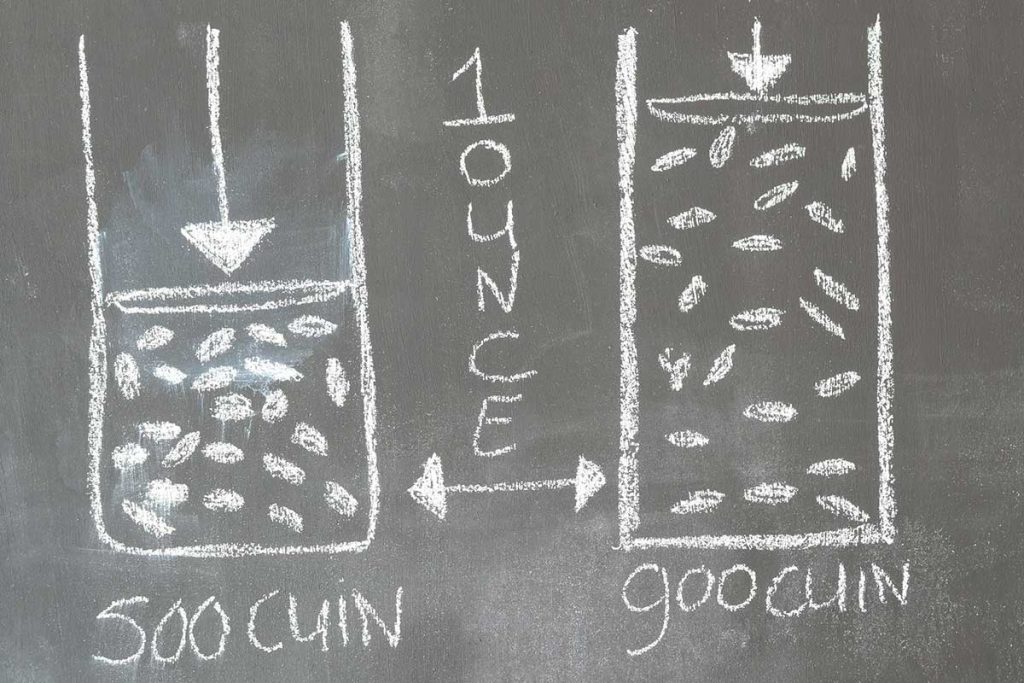
The P.U.R.E. down in the Rab Microlight Alpine Jacket has a CUIN value of 700. With 700 CUIN the Rab jacket is almost at the top level that is achievable with recycled down.
For some of you it might be important to know that because of the recycling of the down no manufacturer can tell – or claims – where the down originated from when it was used for pillows etc. So this can be from geese and ducks that have been force fed, life plucked or raised for the fabrication of foie gras. But still, reuse and upcycling of down is – when possible for the application – much better than using new down or throwing the end of life products on to the landfill.
Fit
The Rab Microlight Alpine Jacket is available in a womens and a mens version and I have the male version of course. The fit of the size S that I have is perfect for me. I am 169 cm tall and weigh 63 kg. The body of the jacket is spacious enough for me to wear a thick baselayer, a midlayer and a shell jacket underneath it. Like I mentioned above: I use down jackets on hikes when I sit down for a cup of tea not to get cold. Sometimes I use them as an outer layer when it is really cold. And in camp…
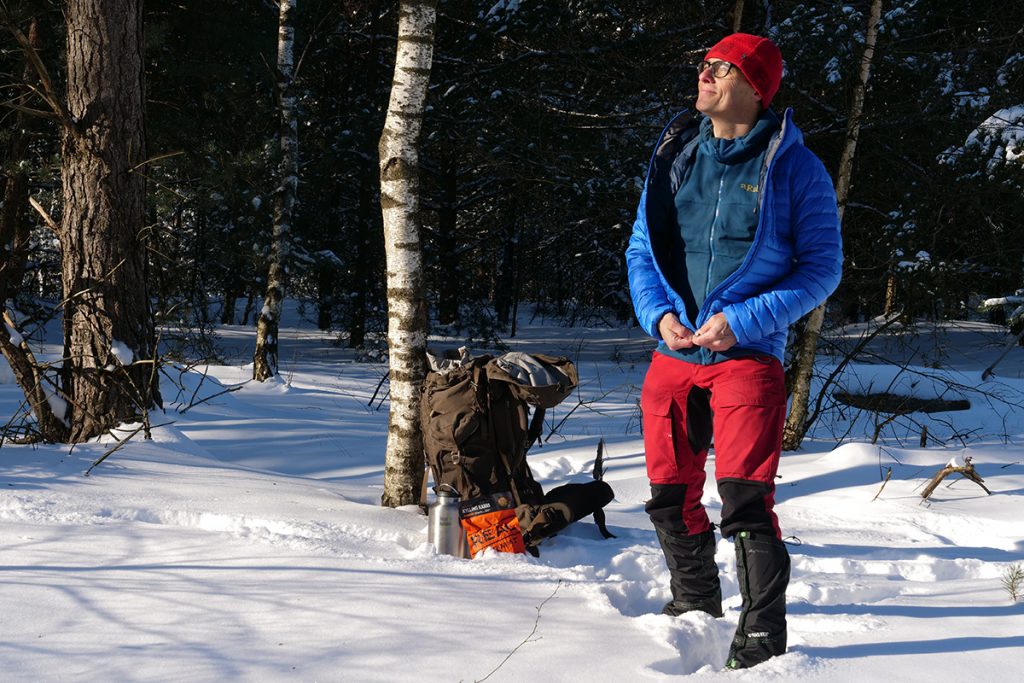
I like that the front of the jacket is long enough and that the back is even longer; when I bend over my back stays protected. The bottom of the jacket has a drawcord! The collar is high and snug so that wind (and snow) has no chance getting in the jacket. At the inside the jacket has a very cuddly soft material that feels nice to the chin. The main zipper has a zipper garage; no harm is done here to the chin too. The arm length is super: even with stretched out arms the wrists are still fully covered. Elastic cuffs prevent wind getting in and warm air escaping.
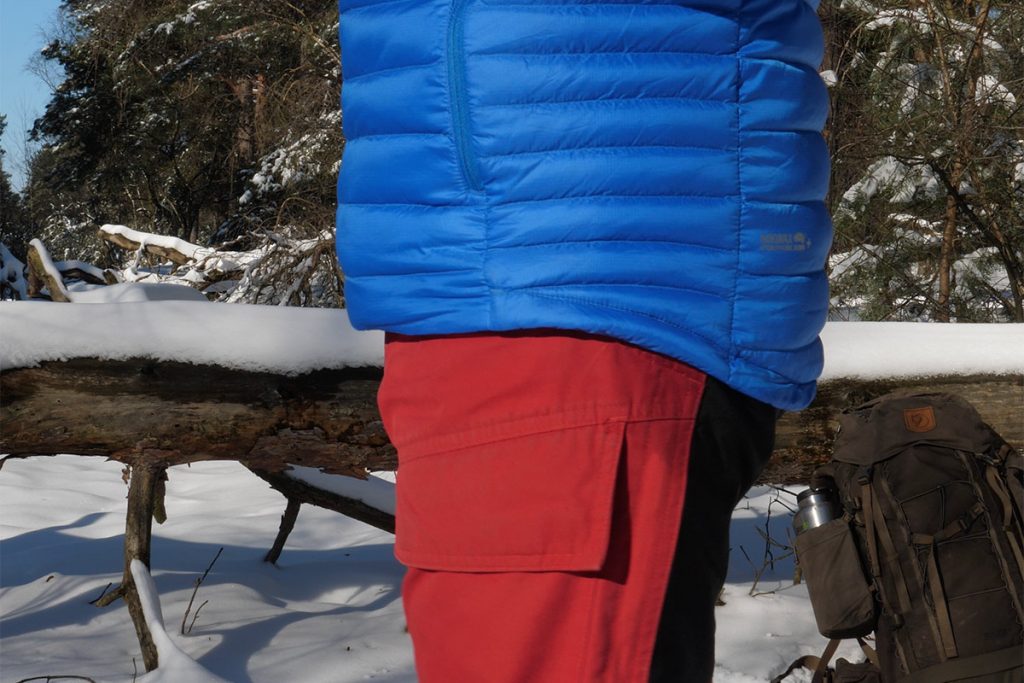
The lower back is nicely protected. 
Around the bumm the Rab Microlight Alpine Jacket has a drawcord.
Hood
I love jackets with hoods. They provide a lot of warmth and shelter when I need it. I wear spectacles so the hood must also protect my glasses from snow and rain. With the Rab Microlight Alpine Jacket this is not different. The hood has a nice reinforced flap and if this is not enough, I can wear a cap without problems underneath the hood. A climbing helmet fits too.
The hood has a snug fit but… To adjust it two drawcords are positioned on either side of the hood and the string ends inside the jacket. To use them I have to open the main zipper with the result that warm air escapes. Not too clever…or… very clever. I talked to Rab about this and the designers did this for a reason. With the drawcords on the inside they will never end up in your face when it is windy. Clever or not clever, you decide for yourself.
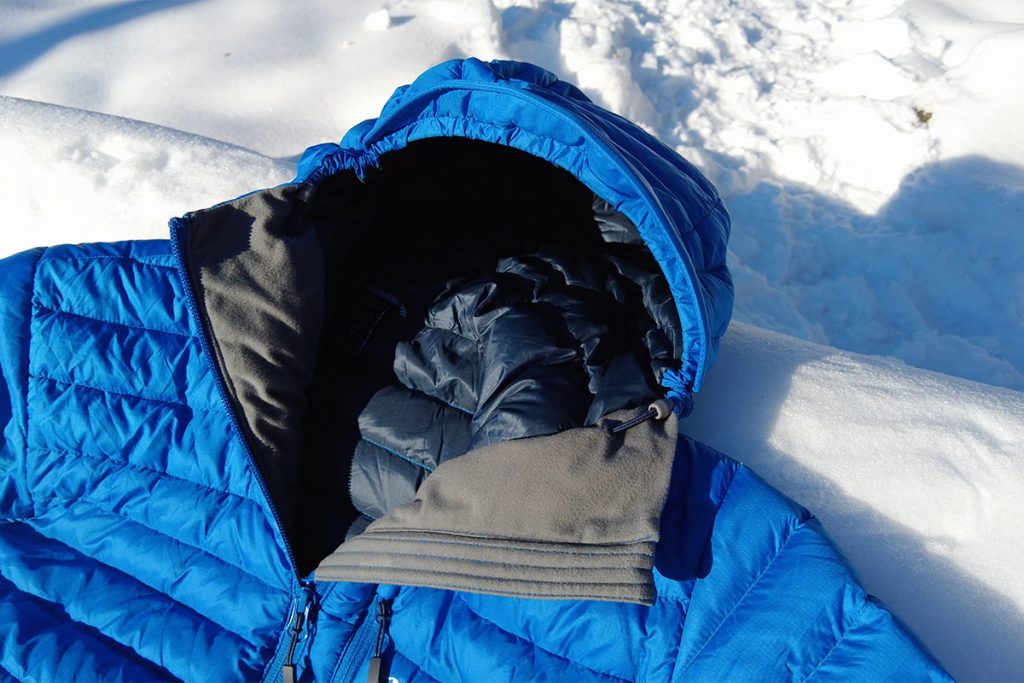
Pockets
The Microlight Alpine Jacket has two large hand pockets on the belly and one on the left chest. All have YKK-zippers with decent pull tabs and they are very well usable with thick winter gloves. The hand pockets are deep and perfect form warming your hands or storing stuff. I like the fact that even with the zippers open, my keys don’t fall out of my pockets very easily. The jacket does not have an inner pocket.
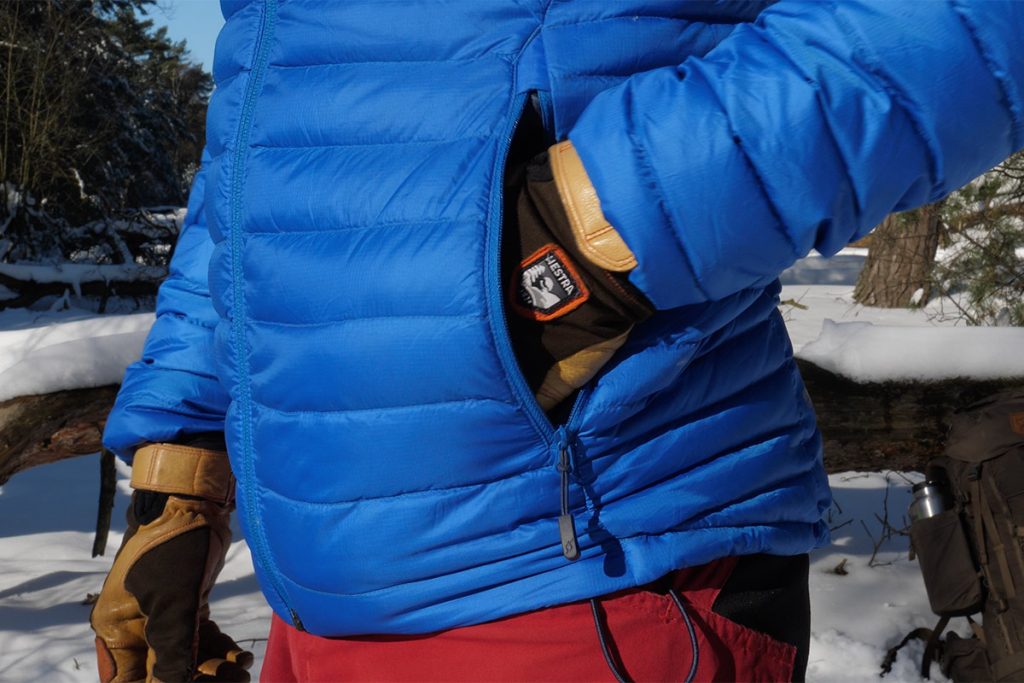
Rab Microlight Alpine Jacket in practice
I have been using the Rab Microlight Alpine Jacket for a couple of months and the pity is that because of the Covid situation I have not been able to travel and use it in the Alpine mountains. But I have used its predecessor a lot and since winter hit The Netherlands last week, I got enough combined experiences with the Microlight Alpine Jacket. Is it warm? Yes it is. I used it at minus 13 (the predecessor at -30…) and I felt comfortable the whole time. The P.U.R.E. 700 Cuin is up to its task and the fit is super. Even with a lot of layers my freedom of movement is not limited. And… the jacket is not that noisy.
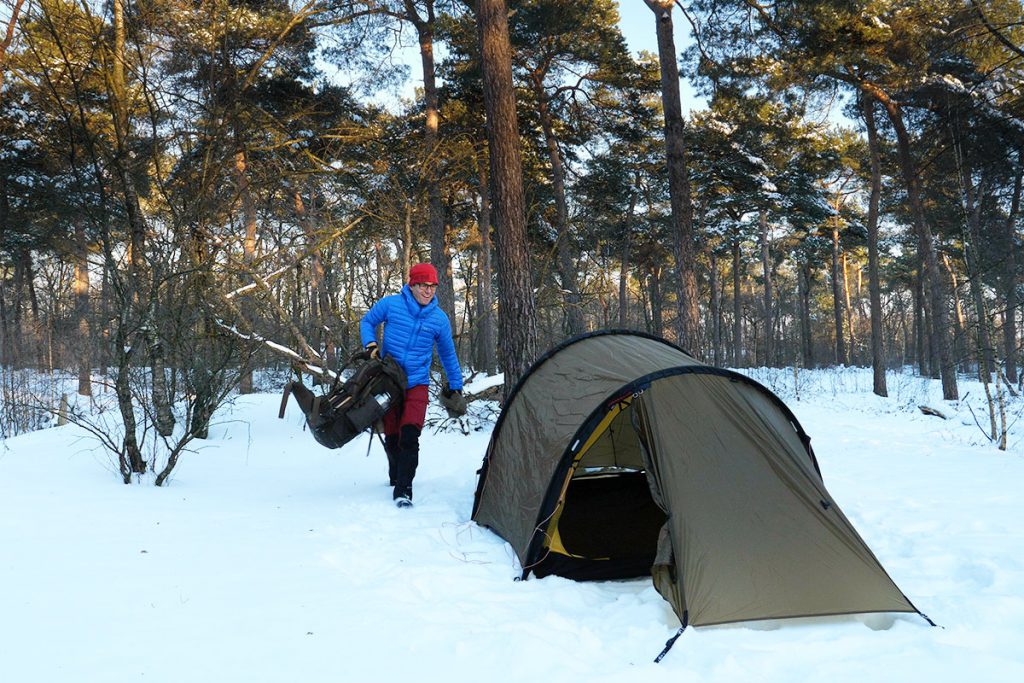
Camping in The Netherlands… a rare sight nowadays. 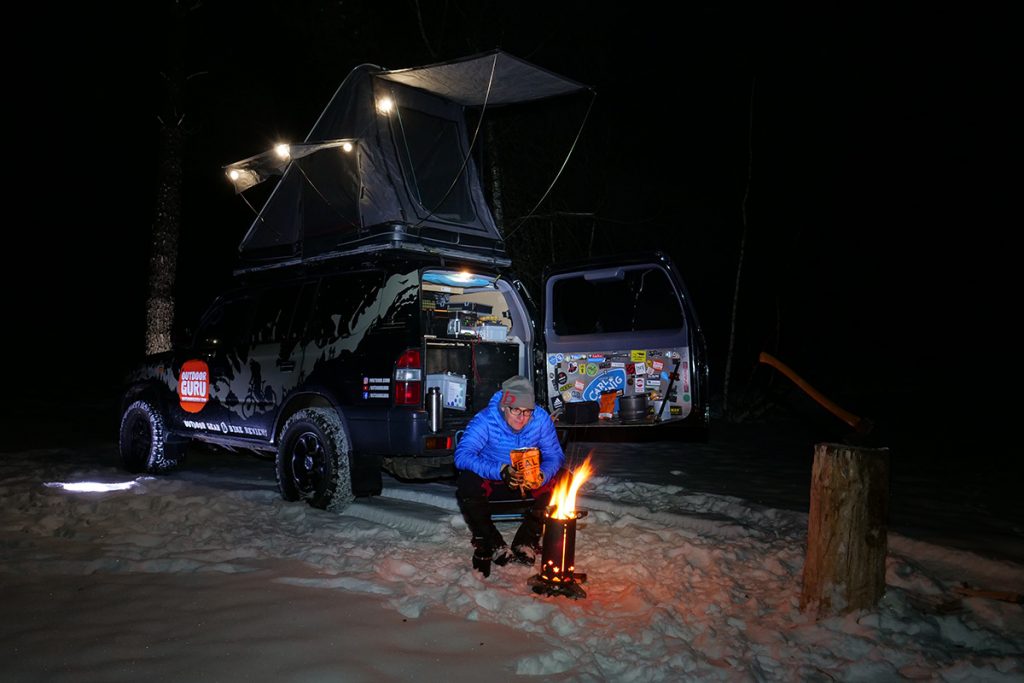
Not only the campfire kept me warm… the jacket does fine at minus 13 degrees Celsius.
Baffles
The down in the jacket stays in place in pretty straight forward sewn-through baffles: the outer and inner fabric is stitched together and the down is inside the created ‘tubes’. Because of this construction thermal cold bridges are a logical consequence; where both fabrics touch each other at the seam, there is no down. But in the Rab Microlight Alpine Jacket the cold bridges are not noticeable thanks to the proper filling of the baffles and the fact that on the front a liner is constructed on top of the baffles. This creates an extra layer of trapped air.
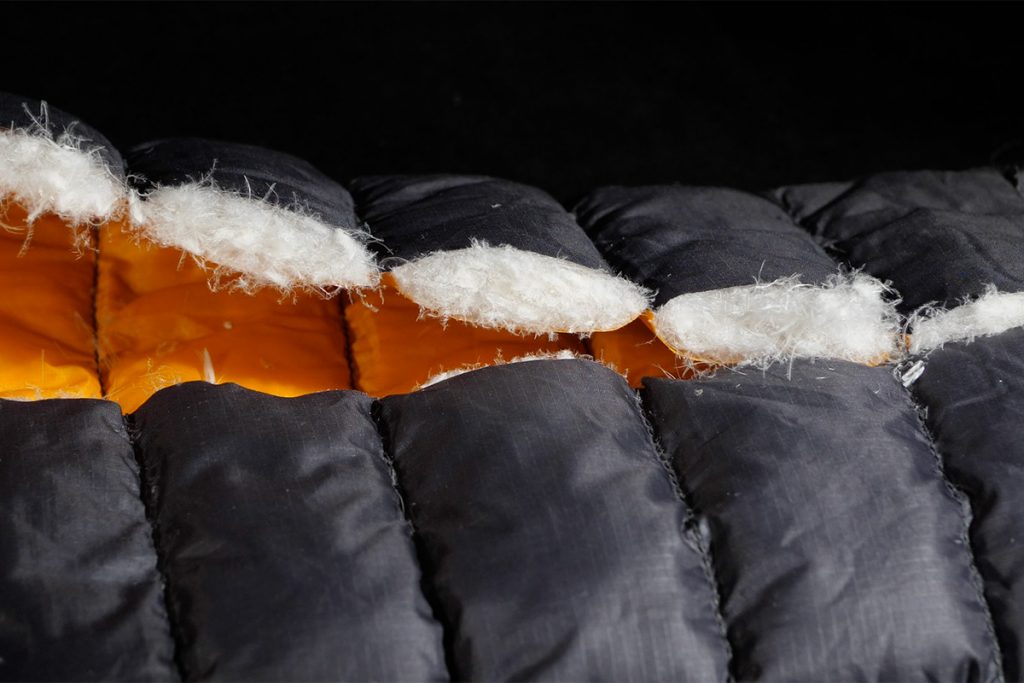
Waterproof or water resistant?
Down jackets are not rain jackets but still they need to be sort of water resistant, not waterproof. The Rab Pertex Quantum outer material is treated with a DWR-coating. DWR stands for Durable Water Repellent. Rab – or Pertex – uses a DWR-coating that is not free of PFC’s. PFC’s or PerFluorCarbon are responsible for the destruction of our ozone layer. Nowadays it is possible to use PFC-free DWR-coatings although they don’t yet seem to have the same durability as the ones with PFC’s. Rab uses C6 PFC which might not be the most environmentally friendly option but at least it has proven to be very durable.

For the P.U.R.E. down the story is completely different. After being cleaned the down is treated with Nikwax, making it water-repellent – hydrophobic. This Nikwax water-repellent treatment is completely free of PFC’s. The treatment prevents the down from getting damp due to sweat or weather. Down that is damp insulates less and sticks to each other resulting in even less insulation. And hydrophobic down dries faster.
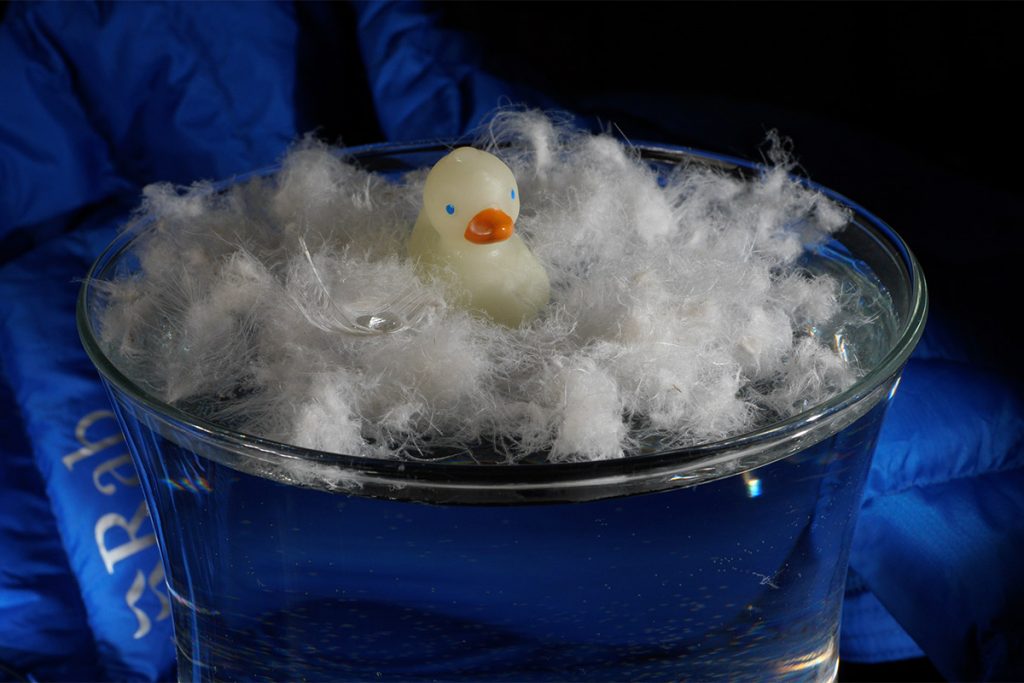
My verdict
The Rab Microlight Alpine Jacket has a lot that I absolutely like. With a weight of only a bit over 400 grams and a packsize of 150 x 220 mm it always finds a place in my backpack. The stuff bag is fine and the down expands in a few minutes to its full fluffiness. I applaud the fact that Rab uses recycled materials for the main and liner fabric and that they use recycled – or should I write upcycled – P.U.R.E. down. That the down is treated with PFC-free Nikwax to make it hydrophobic is a big plus. The challenge for Rab – and a lot of other outdoor gear brands – is now to develop a rugged and effective PFC-free DWR-coating on the outer Pertex Quatum fabric.
The jacket kept me warm at -13 degrees Celsius and is capable of resisting wet conditions well. I love the fit and the freedom of movement in the jacket. The hood fits well and provides shelter and the soft material on the chin inside is a welcome extra. The hood adjustment on the inside is something you like or dislike. I miss an inside pocket. The Rab Microlight Alpine Jacket retails for € 229,95/ £ 195,00/ $ 280,00 and I think that is a nice price to pay for a sustainable, durable and well performing recycled down jacket. I rate the Rab Microlight Alpine Jacket at 9 out of 10 points total.
Information
UK: https://rab.equipment/uk/mens/down-jackets
EU: https://rab.equipment/eu/mens/down-jackets
US: https://rab.equipment/us/mens/down-jackets
